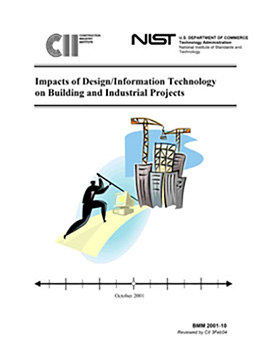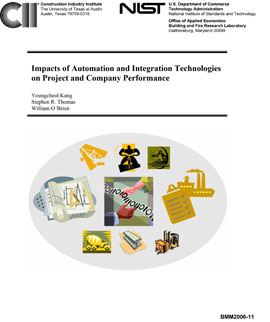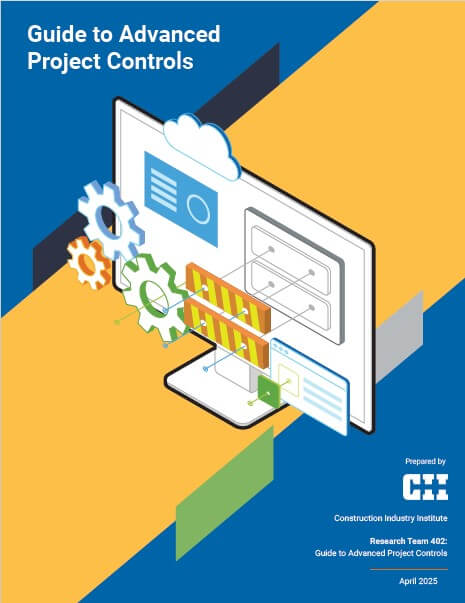
Impacts of Design/Information Technology on Building and Industrial Projects
This study, sponsored by the National Institute of Standards and Technology (NIST), represents a collaborative effort by industry, government, and academia to evaluate the use of design/information technology (D/IT) and to relate the degree of D/IT use to project performance.
The study consisted of two tasks. The first was a detailed statistical analysis of 566 projects in the Construction Industry Institute (CII) benchmarking database. This analysis produced baseline measures of performance and D/IT use, and then established the correlation between these measures to assess the economic value of using the technologies. This report, which summarizes the findings of the statistical analyses, was the product of the second study task.
The analytic data set included all U.S. domestic and international projects submitted by owners and contractors between 1997 and 1999 using versions 2.0, 3.0, or 4.0 of the CII Benchmarking database. In order to analyze project data that were comparable in scope for owners and contractors, only those projects for which contractors performed both design and construction tasks were included. The resulting data set was again refined to include two industry groups, industrial and buildings. The results were presented in tables under one of four groupings: Owners, Buildings; Owners, Industrial; Contractors, Buildings; Contractors, Industrial.
The results of this study establish that projects benefit from D/IT use. Both owners and contractors can expect overall project cost savings of approximately 2.1 and 1.8 percent, respectively. For owners, there was evidence of construction cost savings of nearly 4 percent by increasing the use of D/IT, as well. For both, there was evidence of construction schedule compression.


